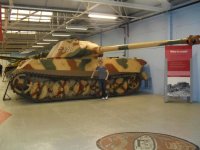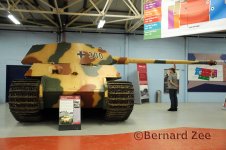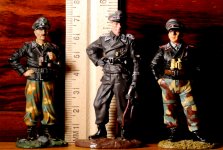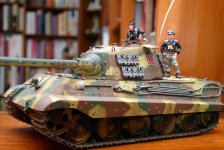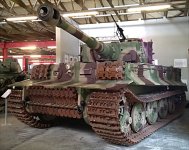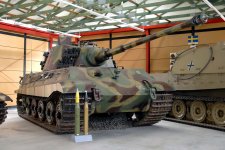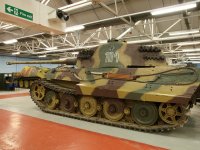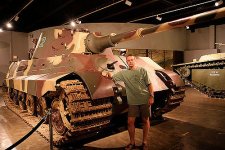

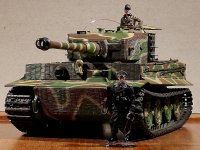
The three Tiger Is left to right are: Minichamps 1/35 scale, The Collectors Showcase Arnhem Tiger 1/30 scale & VsTank 1/24 scale.
The figures with the Panzers left to right are: CanDo 50 mm, W. Britains 60 mm & Del Prado 70 mm.
The Dunkelgleb on each Tiger is different yet accurate. The color officially changed three times during the war. The color when applied in the field would be different depending on what thinner was used for the paint paste i.e. Gasoline, Oil etc. Sun and weather would fade the color over time. The Rotbraun RAL 8012 and Olivgrun RAL 6003 on both the TCS and VsTank Tigers are also accurate. Late in the war Red Primer replaced Rotbraun as supplies ran out. The Primer color was more red than the Rotbraun.
The VsTank Tiger I is an accurate scale model of the Tiger Is deployed in Normandy by the Schwer SS Pz. Abt. 102 of the II SS Panzer Korps Summer 1944. A fine color drawing of a similar Tiger I is in Jean Restayn's excellent book; Tanks of World War Two. Publisher; Histoire & Collections 1996.


